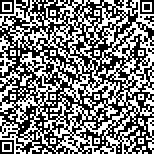苗国富,龚瑜,王丝蕊,等.基于静息态功能性近红外光谱技术探究最小意识状态患者脑功能网络连接和区域自发神经活动的特点[J].中华物理医学与康复杂志,2023,45(4):297-301
扫码阅读全文

|
| 基于静息态功能性近红外光谱技术探究最小意识状态患者脑功能网络连接和区域自发神经活动的特点 |
|
| |
| DOI:10.3760/cma.j.issn.0254-1424.2023.04.002 |
| 中文关键词: 静息态功能性近红外光谱技术 最小意识状态 功能连接 比率低频振幅 |
| 英文关键词: Functional near-infrared spectroscopy Minimally-conscious states Functional connectivity Fractional amplitude of low-frequency fluctuation |
| 基金项目:国家重点研发计划(2018YFC2002302) |
|
| 摘要点击次数: 5091 |
| 全文下载次数: 5286 |
| 中文摘要: |
| 目的 采用静息态功能性近红外光谱技术(rs-fNIRS)探究最小意识状态(MCS)患者脑网络功能连接(FC)强度和区域自发神经活动的特点。 方法 选取10例MCS患者,纳入MCS组,同期招募12例性别、年龄与MCS组匹配的健康受试者,纳入健康对照组(HC组)。采集所有受试者5 min rs-fNIRS数据。采用NIRS-KIT工具箱计算每例受试者的53通道FC强度和比率低频振幅(fALFF)值,比较两组受试者每个通道FC值和fALFF值的差异。 结果 与HC组比较,MCS组有17条通道的功能连接强度显著下降[P<0.05,经错误发现率(FDR)校正],异常脑区主要位于左右额极、背外侧前额叶。与HC组比较,MCS组的Broca区(通道2)、前运动皮质与辅助运动皮质(通道4、10、40)、背外侧前额叶(通道6、11、25、39)、额眼区(通道12)和额极(通道23、27、36)的fALFF值升高,额极(通道19)的fALFF值下降(P<0.05,经FDR校正)。 结论 MCS患者前额叶、部分语言和运动相关脑区的自发神经活动过度活跃,前额叶内部功能网络协同失调。 |
| 英文摘要: |
| Objective To explore the characteristics of functional connectivity (FC) and regional spontaneous brain activity in patients in a minimally-conscious state (MCS). Methods Resting-state functional near-infrared spectroscopy (rs-fNIRS) was used. Ten minimally-conscious patients were studied along with 12 healthy counterparts as healthy controls (HC). Five minutes of rs-fNIRS data were recorded from each subject and FC and the fractional amplitude of low-frequency fluctuations (fALFFs) of 53 channels were computed using the NIRS-KIT toolbox. The results were compared between the two groups. Results Compared with the HC group, a significant decrease was observed in the average FC strength of seventeen channel pairs after false discovery rate (FDR) correction. Most were in the right and left frontal pole, as well as the dorsolateral prefrontal lobe. Compared with the HC group, the average fALFF values of Broca′s area (channel 2), the premotor cortex and the supplementary motor cortex (channels 4, 10, and 40), the dorsolateral prefrontal lobe (channels 6, 11, 25, 39), the eye motor area of the frontal lobe (channel 12) and the frontal pole (channels 23, 27, 36) were significantly greater in the MCS group. The fluctuations of the frontal pole (channel 19) were significantly less (after FDR correction). Conclusion In an MCS spontaneous neural activity is over-active in the prefrontal lobe and some speech- and motor-related brain regions, and coordination of the internal prefrontal functional network is disordered. |
|
查看全文
查看/发表评论 下载PDF阅读器 |
| 关闭 |